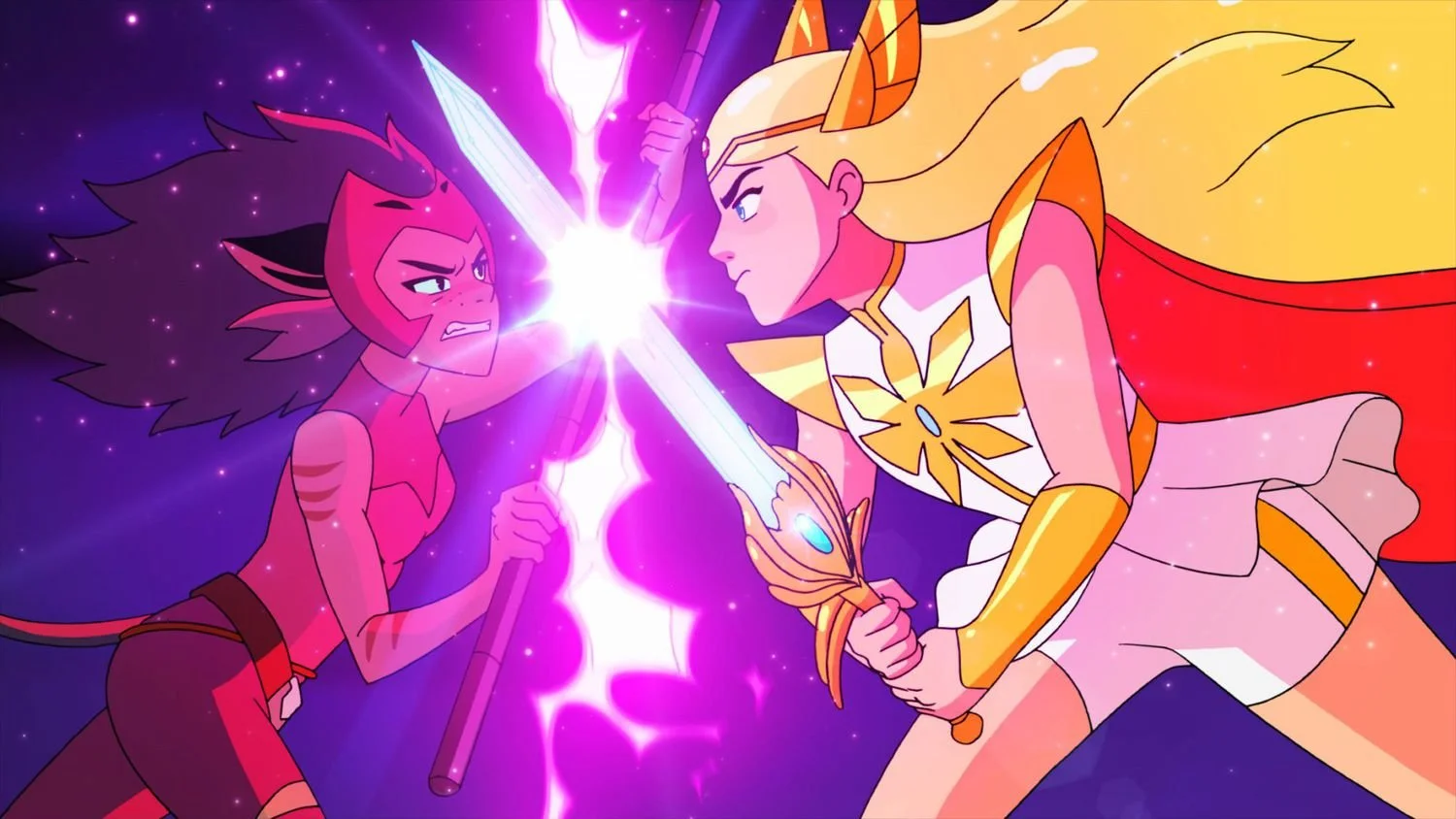LGBTQ+ Representation in She-Ra and the Princesses of Power
{ Maya Capasso }
It's been four years since the incredible, historic series finale of She-Ra and the Princesses of Power (2018-2020) aired on Netflix. Whether fans discovered the show because they were fans of the original She Ra: Princess of Power (1985-1987) or were attracted to its bright colors and girl-power aesthetic on the Netflix home page, fans agree that She Ra and the Princesses of Power is one of the best LGBTQ+ coming of age series on TV. Created by transmasculine, nonbinary storyteller Nate Stevenson, She Ra follows a group of princesses' quest for justice against the evil Horde as they take down fascism, create their own destinies, and fall in love with one another no matter their gender identities.
She Ra couldn't exist without important forerunners in LGBTQ+ representation in children's animation. Series like The Legend of Korra (2012-2014) and Steven Universe (2013-2019) slowly but surely gave same-sex relationships a spot on screen in kid's TV, despite production companies' objections. She Ra began with the same battle–to insert as much queer content as possible without bothering the executives. But by the series' final season, Stevenson and the other writers took a significant step forward for queer representation by finally confirming a romantic relationship between the series' two main characters, Catra (AJ Michalka) and Adora (Aimee Carrero).
While the first few seasons of She Ra don't focus on queer relationships, that doesn't mean the show is devoid of LGBTQ+ characters and themes. Early in the series, we meet Spinnerella (ND Stevenson) and Netossa (Krystal Joy Brown), an adorable lesbian princess couple who hold hands and show affection on screen. Scorpia (Lauren Ash), the muscular, kind-hearted Horde soldier, develops an unrequited crush on Catra as soon as the two meet. Character designer Ray Geiger admitted that they designed Princess Perfuma (Genesis Rodriguez) as a trans woman, and Glimmer's (Karen Fukuhara) wardrobe radiates the bisexual flag colors. The shapeshifting Double Trouble (Jacob Tobia) is nonbinary and uses they/them pronouns. Plus, best friends-turned-enemies (and later turned lovers) Catra and Adora have a complicated, tense relationship spilling over with competition and love that borders on obsession.
The series also contains ample queer themes that don't focus on sexuality. Throughout the show, especially in season four, Adora struggles with the tension between following the path set out for her by others or choosing her own destiny. Society consistently tells LGBTQ+ people to ignore their instincts about their own identity and dreams in favor of conforming and pleasing others. But Adora helps fight against this notion by forging her own path even when it seems impossible. At the same time, the princesses constantly fight against all odds to overthrow terrifying authoritarian regimes. They fight against the status quo to create a world filled with justice, community, and, of course, rainbows.
Another aspect of She Ra that feels refreshing to the LGBTQ+ community is its refusal to include themes of homophobia or oppression related to sexual orientation or gender identity. While some series need to depict the realities of facing homophobia in our often harsh society, it's also crucial for queer people to consume stories that remind us that it doesn't have to be this way. Never does any character–even a villain–neglect to use another's correct pronouns or shame them for being in a same-sex relationship. Instead, the conflict in the series focuses on strained friendships, betrayal, jealousy, fascism, and creating one's destiny.
But the most exciting LGBTQ+ element in She Ra emerges in the finale when Catra and Adora finally admit that they love each other and share a heartwarming kiss. It's the climax of the entire series–Catra's love heals Adora, who then uses her powers as She Ra to save the world from the Horde. We've all enjoyed stories time and time again that use the trope of "love can save the world." Just think of Harry Potter. But when have we ever got to witness queer love saving the world in the media? We finally see this trope turned LGBTQ+ in action in She Ra. This essential LGBTQ+ series tells a fantastic coming-of-age story about two loveable yet troubled lesbians who learn to set their individual struggles aside in the name of love.

